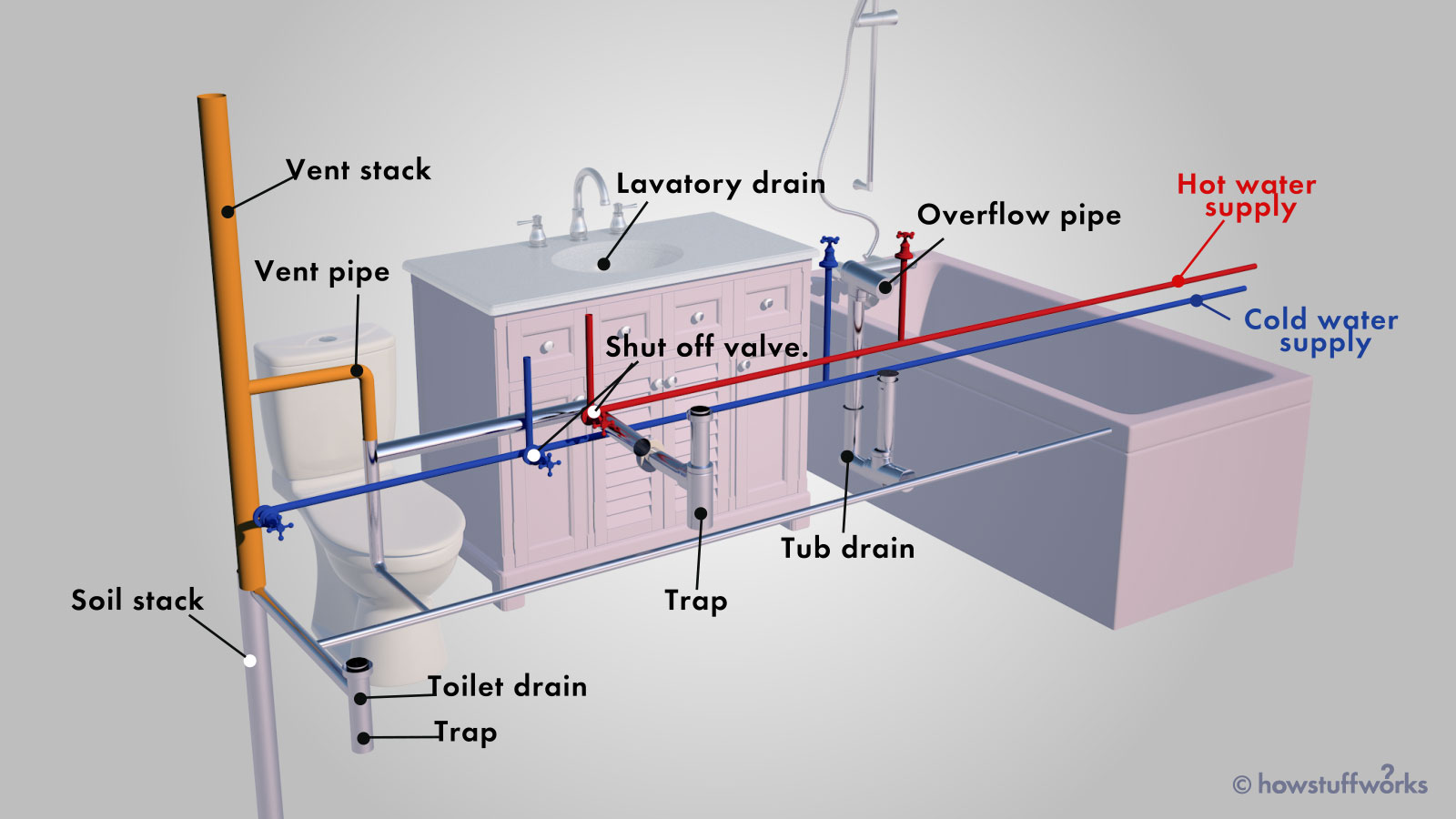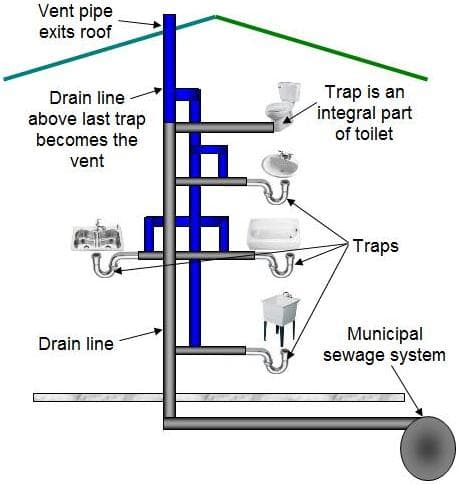The Essential Elements of Your Property's Plumbing System
The Essential Elements of Your Property's Plumbing System
Blog Article
What're your opinions about Understanding Your Home's Plumbing Anatomy?

Understanding exactly how your home's pipes system works is vital for every property owner. From delivering tidy water for drinking, food preparation, and showering to safely eliminating wastewater, a well-kept pipes system is crucial for your household's wellness and convenience. In this extensive overview, we'll discover the elaborate network that comprises your home's pipes and deal tips on maintenance, upgrades, and managing usual issues.
Introduction
Your home's pipes system is greater than simply a network of pipelines; it's a complex system that ensures you have access to tidy water and reliable wastewater elimination. Knowing its components and exactly how they collaborate can aid you prevent costly repair work and make sure every little thing runs efficiently.
Standard Elements of a Plumbing System
Pipes and Tubes
At the heart of your pipes system are the pipes and tubing that bring water throughout your home. These can be made from different products such as copper, PVC, or PEX, each with its benefits in regards to durability and cost-effectiveness.
Fixtures: Sinks, Toilets, Showers, etc.
Components like sinks, commodes, showers, and bathtubs are where water is used in your home. Understanding how these components attach to the pipes system aids in detecting troubles and intending upgrades.
Valves and Shut-off Points
Valves control the circulation of water in your plumbing system. Shut-off valves are essential during emergencies or when you require to make fixings, permitting you to separate parts of the system without interfering with water circulation to the entire house.
Water Supply System
Key Water Line
The major water line links your home to the metropolitan water system or an exclusive well. It's where water enters your home and is distributed to various components.
Water Meter and Stress Regulator
The water meter measures your water usage, while a stress regulatory authority makes sure that water flows at a safe stress throughout your home's plumbing system, stopping damage to pipelines and components.
Cold Water vs. Hot Water Lines
Recognizing the difference between cold water lines, which provide water directly from the major, and hot water lines, which carry warmed water from the water heater, assists in fixing and planning for upgrades.
Drainage System
Drain Pipes and Traps
Drain pipelines bring wastewater away from sinks, showers, and bathrooms to the sewage system or sewage-disposal tank. Traps protect against sewage system gases from entering your home and likewise trap particles that can trigger obstructions.
Ventilation Pipelines
Ventilation pipelines enable air into the water drainage system, avoiding suction that can slow down water drainage and trigger catches to empty. Proper air flow is important for keeping the stability of your pipes system.
Significance of Correct Drain
Ensuring appropriate drainage stops back-ups and water damages. Consistently cleaning up drains and maintaining catches can avoid costly repair services and extend the life of your pipes system.
Water Heating Unit
Types of Hot Water Heater
Water heaters can be tankless or typical tank-style. Tankless heaters warmth water on demand, while storage tanks keep warmed water for immediate use.
Updating Your Pipes System
Reasons for Upgrading
Updating to water-efficient components or changing old pipes can enhance water top quality, decrease water costs, and boost the worth of your home.
Modern Pipes Technologies and Their Benefits
Explore modern technologies like wise leak detectors, water-saving bathrooms, and energy-efficient water heaters that can save money and reduce ecological influence.
Price Factors To Consider and ROI
Calculate the in advance expenses versus long-term savings when considering pipes upgrades. Several upgrades spend for themselves with decreased utility bills and less repair services.
Just How Water Heaters Connect to the Pipes System
Recognizing just how water heaters link to both the cold water supply and hot water circulation lines aids in detecting concerns like not enough warm water or leakages.
Upkeep Tips for Water Heaters
Routinely flushing your hot water heater to get rid of debris, checking the temperature level setups, and evaluating for leakages can extend its life expectancy and boost power performance.
Typical Pipes Problems
Leaks and Their Reasons
Leakages can take place because of aging pipes, loosened installations, or high water stress. Resolving leakages immediately protects against water damages and mold development.
Obstructions and Obstructions
Blockages in drains and toilets are often caused by flushing non-flushable things or a build-up of grease and hair. Utilizing drain displays and bearing in mind what drops your drains pipes can protect against blockages.
Signs of Plumbing Troubles to Look For
Low water pressure, slow drains pipes, foul odors, or abnormally high water costs are signs of possible pipes problems that should be attended to quickly.
Pipes Maintenance Tips
Regular Inspections and Checks
Schedule annual plumbing inspections to catch concerns early. Seek indications of leakages, corrosion, or mineral accumulation in taps and showerheads.
DIY Maintenance Tasks
Basic tasks like cleansing faucet aerators, looking for toilet leakages using color tablets, or shielding exposed pipelines in cold environments can protect against major pipes issues.
When to Call a Specialist Plumbing Technician
Know when a pipes problem calls for specialist know-how. Attempting complicated repairs without appropriate expertise can result in even more damage and greater repair work expenses.
Tips for Lowering Water Usage
Basic habits like taking care of leaks without delay, taking much shorter showers, and running complete loads of laundry and recipes can conserve water and reduced your utility expenses.
Eco-Friendly Plumbing Options
Consider lasting plumbing materials like bamboo for floor covering, which is durable and environment-friendly, or recycled glass for countertops.
Emergency Preparedness
Steps to Take During a Plumbing Emergency situation
Know where your shut-off valves are located and just how to turn off the water in case of a burst pipe or major leak.
Significance of Having Emergency Situation Contacts Convenient
Keep call details for local plumbings or emergency solutions conveniently offered for fast response during a plumbing situation.
Environmental Effect and Preservation
Water-Saving Components and Devices
Installing low-flow faucets, showerheads, and bathrooms can substantially minimize water use without giving up efficiency.
Do It Yourself Emergency Situation Fixes (When Relevant).
Momentary repairs like utilizing air duct tape to spot a leaking pipe or putting a container under a trickling tap can minimize damage until a professional plumbing technician gets here.
Verdict.
Comprehending the composition of your home's pipes system equips you to preserve it efficiently, saving time and money on repair services. By complying with routine maintenance regimens and staying notified about modern-day pipes innovations, you can ensure your plumbing system runs successfully for several years ahead.
Exploring Your Homes Plumbing Anatomy
Water Supply System
Main Water Line: This is where water enters your home from the municipal supply or a private well. Water Meter: Typically located near where the main water line enters the property, it measures the amount of water used. Shutoff Valve: It s crucial to know where this is in case of emergencies. It allows you to turn off the water supply to the entire house. Pipes and Fittings: These distribute water throughout your home. Materials can include copper, PVC, or PEX. Drain-Waste-Vent (DWV) System
Drains: Located in sinks, showers, and tubs, these carry wastewater away. Traps: U-shaped pipes under sinks that hold standing water, blocking sewer gases from entering the home. Vents: Pipes that lead from the DWV system to the outside, preventing vacuum formation and allowing gases to escape. Sewer Line: Carries all wastewater from the home to the municipal sewer system or a septic tank. Fixtures and Appliances
Sinks, Toilets, and Showers Dishwashers and Washing Machines Water Heaters Maintenance Tips
Regularly check for leaks in exposed pipes and around fixtures. Inspect the water heater annually for signs of wear. Clean drains and traps to prevent clogs and odors. Know how to shut off water to individual fixtures. When to Call a Professional
Major leaks or burst pipes Installation of new pipes or fixtures Septic tank issues Remodeling projects that involve plumbing changes Conclusion
Understanding the anatomy of your home's plumbing is key to maintaining a functional and efficient system. Regular checks and knowing when to call in the experts can save you time, money, and stress.
https://www.mavyn.com/blog/exploring-your-homes-plumbing-anatomy

I hope you liked our article about Plumbing Installation 101: All You Need to Know. Thank you for spending some time to read through our posting. If you please pause to share this page if you liked it. I truly appreciate your readership.
Call Today Report this page